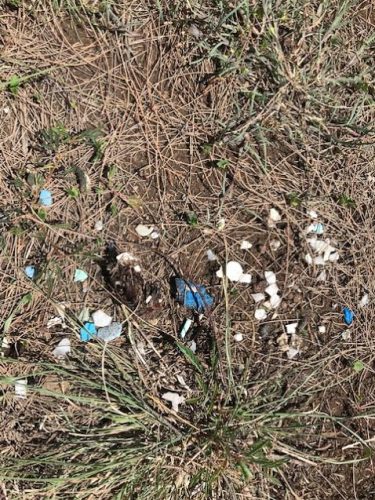Among many gifts and lessons I’ve received from spending this summer on Kauai, one of the biggest educational impacts I’ve received from my experience has been seeing first hand the consequences of plastic.The island of Kauai spirals out from the North Pacific Gyre, a system of circulating currents in the ocean. The state of Hawaii (but Kauai especially) is a net for all of the world’s trash. Not only does the island have to deal with its own generated waste, but the thousands of pounds of plastic washed onto shore by carrying currents every month. I was able to learn more about Kauai’s history with plastic waste when we worked alongside representatives from the Surfrider organization during our library activity hosted for summer school programs. After just 10 minutes of listening to a lesson geared toward elementary school age children, I learned more about plastic’s effect on the environment than any news outlets or public services had informed me. I learned plastic takes an estimated 400 years to “breakdown” (even though chemically it never really disappears). I hadn’t thought about how this means that all of the world’s plastic still exists ever since it was first invented and marketed. I didn’t know that there’s a mass of plastic and pollution cultivated by the Pacific gyres, called the Great Pacific Garbage Patch, which is more than double the size of Texas or 1.6 million square kilometers in size. And above all I hadn’t seen firsthand the effects of plastic pollution on wildlife outside of pictures and documentaries. Because I had the privilege of working at the Wildlife Refuge, the consequences of plastic became exceptionally more prevalent in my day to day.
For those that are more unfamiliar with Laysan Albatross facts, I will include a brief interlude of information as well as picture evidence of how cute they are:

Baby Albatross Chick

Parents visiting their chicks.
- The Laysan albatross migrates to Hawaii to breed and nest
- After hatching it takes approximately 7 months until the chicks are ready to fledge
- Their parents will take turns flying to Alaska and back to feed their baby
- Right before the chick is ready to fledge it will regurgitate all the matter their stomach is unable to digest in a gross slimy log of stuff called a bolus
- A healthy bolus would contain squid beaks which are made of keratin, some traces of natural debris, and a rock or two.
- A healthy bolus would NOT contain plastic.
In this species’ most vulnerable state before it has so much as taken flight and seen the ocean for itself, these birds are being poisoned by plastic.
Comparatively the albatross species could be considered one of the lucky ones because it is able to regurgitate the plastic more often than not, but this does not mean it isn’t often fatal as well. As the chick is fed the indigestibles take up space in its stomach. If the chick is only fed plastic it can think it is full yet die of malnutrition with a belly full of plastic.

This is a picture of a decomposed bolus found on our
albatross survey, most look similar to this. (Full of plastic)
After being inspired by my experience with Surfrider, I got in touch with them to plan a beach clean up on one of our days off. A large portion of our group of DukeEngage students showed up, and in 4 hours we filled five massive bags with plastic. Throughout the year using volunteer help alone, the organization picks up more than 51.8 metric tons of marine debris through beach cleanups. Averaging at about 10,000 pounds of trash per month!

I was reminded that there is still hope through my learning experience with plastic. I wasn’t as aware before working with Surfrider, but there are actually quite a few environmentally safe alternatives to plastic use. Yet because plastic is made from oil, it is no surprise that it remains the profitable product. Recycling might’ve been clearing my conscious in the past, but it shouldn’t have. The U.S. recycling system is such an unbelievable mess I can say confidently that among the mess of plastic I collected during our beach cleanup, I was a likely contributor. In the wake of China’s decision in January to stop accepting post-consumer recyclables, I hope everyone becomes more conscious about reducing plastic waste. I know now that when it becomes easy again to toss the plastic coffee cups or utensils in the bin on campus, I can be reminded of a place getting an unfair share of my waste contributions.

All the plastic we collected with Surfrider.

Site of our beach cleanup.
